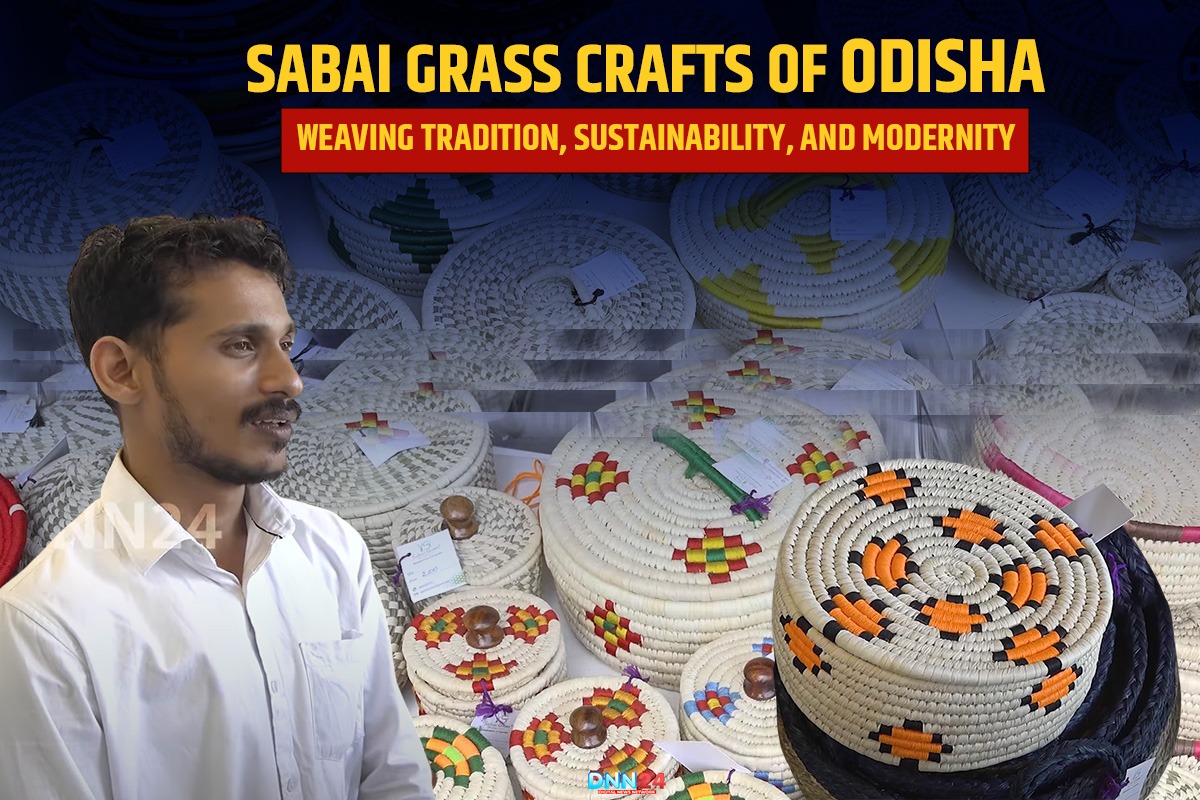In the heart of eastern India, Odisha’s artisans have quietly perfected the art of Sabai grass craftsmanship. Today it is an example of the successful integration of the old century tradition with the tendencies of contemporary environmental concerns. Known scientifically as Eulaliopsis binata, Sabai grass grows abundantly in Odisha’s semi-arid landscapes and serves as the backbone of a thriving cottage industry. From baskets and mats to contemporary home decor and fashion accessories, over 350 distinct products are handcrafted from Sabai grass, reflecting ecological mindfulness and cultural pride. This paper explores how artisans in Odisha are striving to renew the traditional crafts that are proving relevant to today’s life while at the same time sustaining the sustainable use of relevant natural resources, and achieving a new market distintion.
Cultural Heritage: The Roots of Sabai Grass Craftsmanship
Sabai grass craft started in Orissa in 1877. Kashi Mardha of Mayurbhanj procured this natural fiber from other place of Orissa. Today, however, this farming is only carried out in two or three districts across Orissa.
Pankaj Parida is a Sabai grass artisan who makes home items with this natural fiber. These products are perfect substitutes to the plastic items that many of us employ on a daily basis. Sabai items are often organic, or made from natural material and therefore will have no detrimental effects on the environment that they are in.
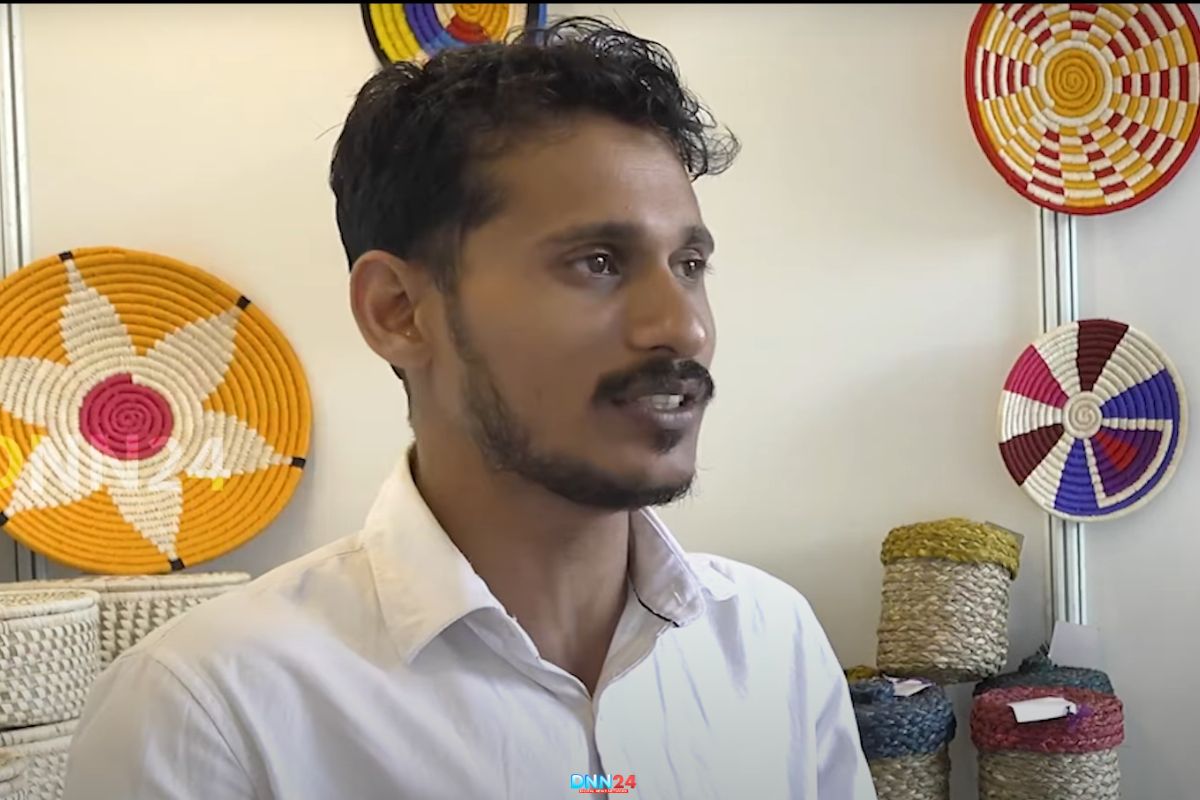
This craft is very beneficial for all the tribal families residing in Mayurbhanj and Keonjhar districts. They have been involved in the manufacture of useful accessories among them being the storage baskets locally known as dokra and floor mats. They also prepare special foods for certain occasions such as Raja Parba and Nuakhai festival.
The knowledge of how to collect, process, and weave Sabai grass passes from parents to children through talking and showing. Weaving cultures differ from one community to another and most can be considered unique in one way or the other. The Bhuyan tribe is one of the tribes that does produce designs with patterns out of artistic work. That is the reason artisans in Balasore integrate Sabai with the palm leaves to bring nice interplays of textures. Nonetheless, despite its age, it is not a terribly advanced or widespread craft. As a result individuals should be aware of these natural products.
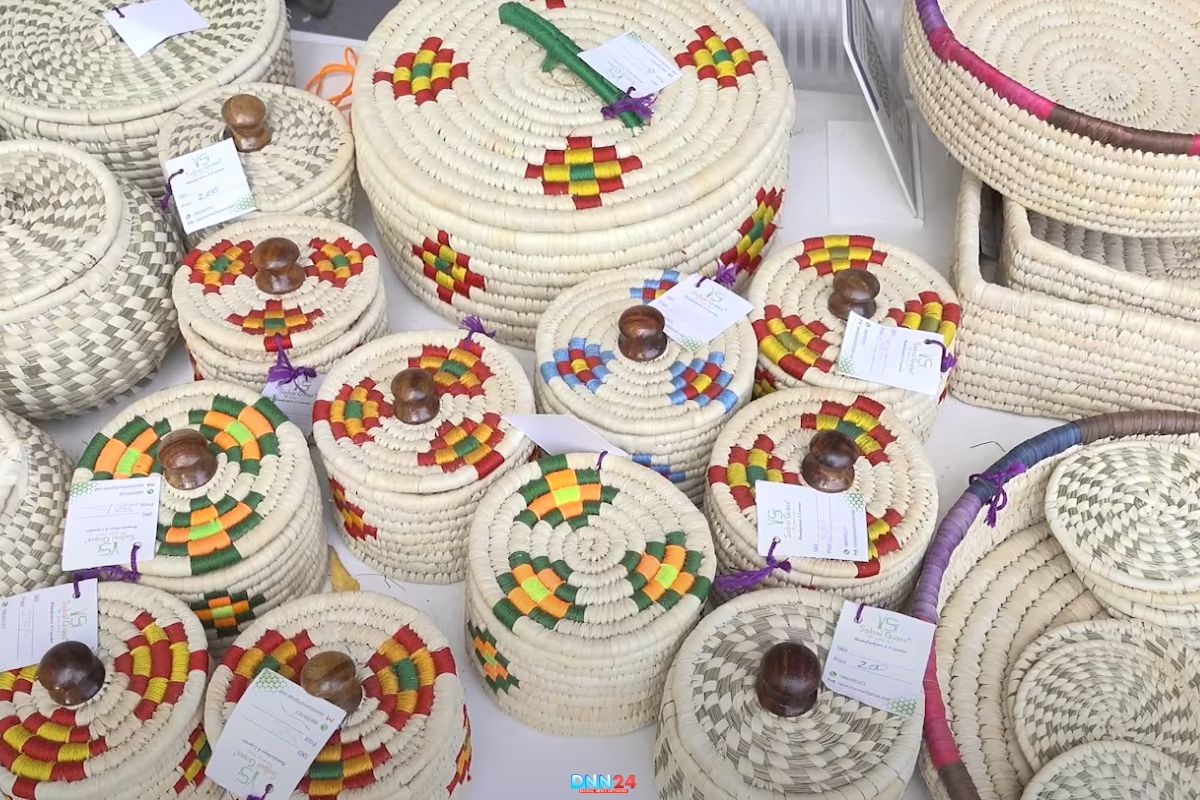
Revival Through Recognition
Unfortunately, due to innovative industrialization and competition from plastic materials, Sabai weaving business received a great blow. However, state initiatives like Odisha Rural Development and Marketing Society (ORMAS) and UNESCO’s recognition of the craft as a “green enterprise” have revitalized interest. Today, they display their creations at national handicraft centres, while such cooperation with designers pre designed traditional patterns popular in today’s aesthetics. These efforts make sure that this heritage craft adopts the modern trend while retaining the tradition.
Sustainability: Sabai Grass as an Eco-Friendly Alternative
From Harvest to Handicraft: A Closed-Loop System
Sabai grass thrives naturally without irrigation or pesticides, making it an environmentally sustainable resource. It is however important to understand that crafting happens in a seasonal manner as explored below:
The components are then harvested in the post-monsoon season since the fiber is tender and easy to process.
Sun Drying: The material is sun-dried for 5 – 7 days in order to make the stalks harden.
Organic coloring: Artisans teach that they do not use the synthetic chemicals in the process of dyeing for the fabrics, instead they use natural products such as turmeric, indigo, and lac.
This process yields virtually no residues; any surplus fibre produced is utilized for energy or organic matter. It can be stated that the use of Sabai crafts contributes 60–70% less carbon footprint as compared to the production of plastics by the year 2024, as mentioned in the TERI report.

Combating Plastic Pollution
Sabai’s products are eco-friendly as they are aimed to replace disposable plastics – Pet waste Bags, Bin liners, shopping & food carry bags.
Market Bags: Sabai tote bags take over polyethylene carry-bags.
Tableware: Plates and bowls made from Sabai grass decompose within months.
Lastly, for its ecological usefulness in the local region, Sabai mats in coastal villages are employed in dune stabilization to avoid soil erosion.

Step-by-Step Crafting Process
Palm: Tops of the palm are cut in a way that they remain alive in order to continue producing yield.
Preparation: Stalks are cut into fine fibers by using a bladed utensil called ‘kathi’ and soaked in water for a while to soften the fibers.
Weaving Techniques:
Coiling: Strands are wound around a core which maybe a rope or young palm leaves mostly utilized in baskets.
Weaving: Flat weaving; making of mats and wall hangings.
Knotting: Complex patterns for jewelry and decorative items.
An item could require from 3 hours (in the case of small coasters) and up to 2 weeks (for such a creation as room dividers for example). Fees vary from ₹50 to ₹5,000, after that it depends on the complexity of the assignment.
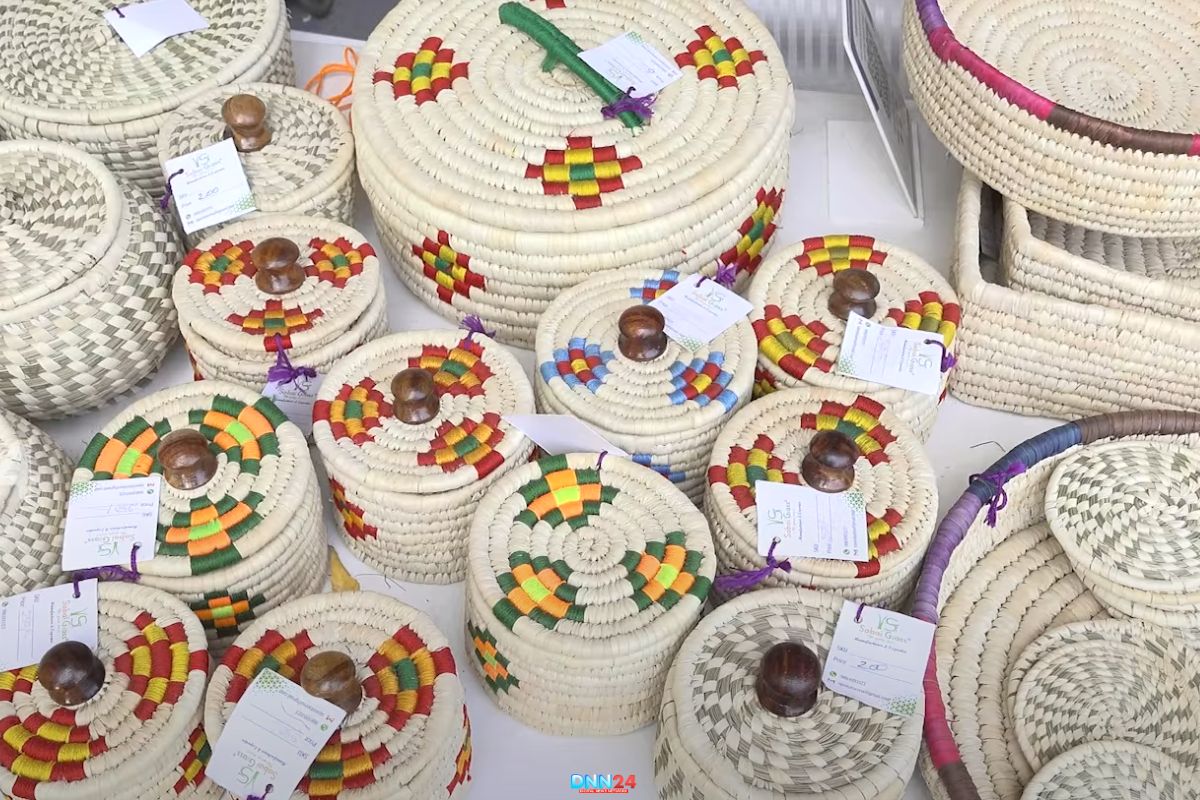
Innovations in Design
To attract the consumers from the urban area the artisans incorporate:
Modular Designs: Stackable storage units.
Fusion Crafts: Combining Sabai with bamboo or recycled fabric.
Custom Orders: Personalized monograms or color schemes for corporate gifting.
Market adaptation, tradition, continuity and change: adjusting to new order and advance.
From Local Haats to Global E-Commerce
This says that despite the fact that the haats continue to be the primary selling centres, the process of digitalization has thrown the following options:
Among the things that can be done under Government Portals include listing the Sabai crafts under ODOP, i.e., One District One Product.
Social Media: Artisans present their skills of weaving by using reels on Instagram.
Export Clusters: NGOs organize the supply of weaving fabric from Bihar to European eco-friendly brands.
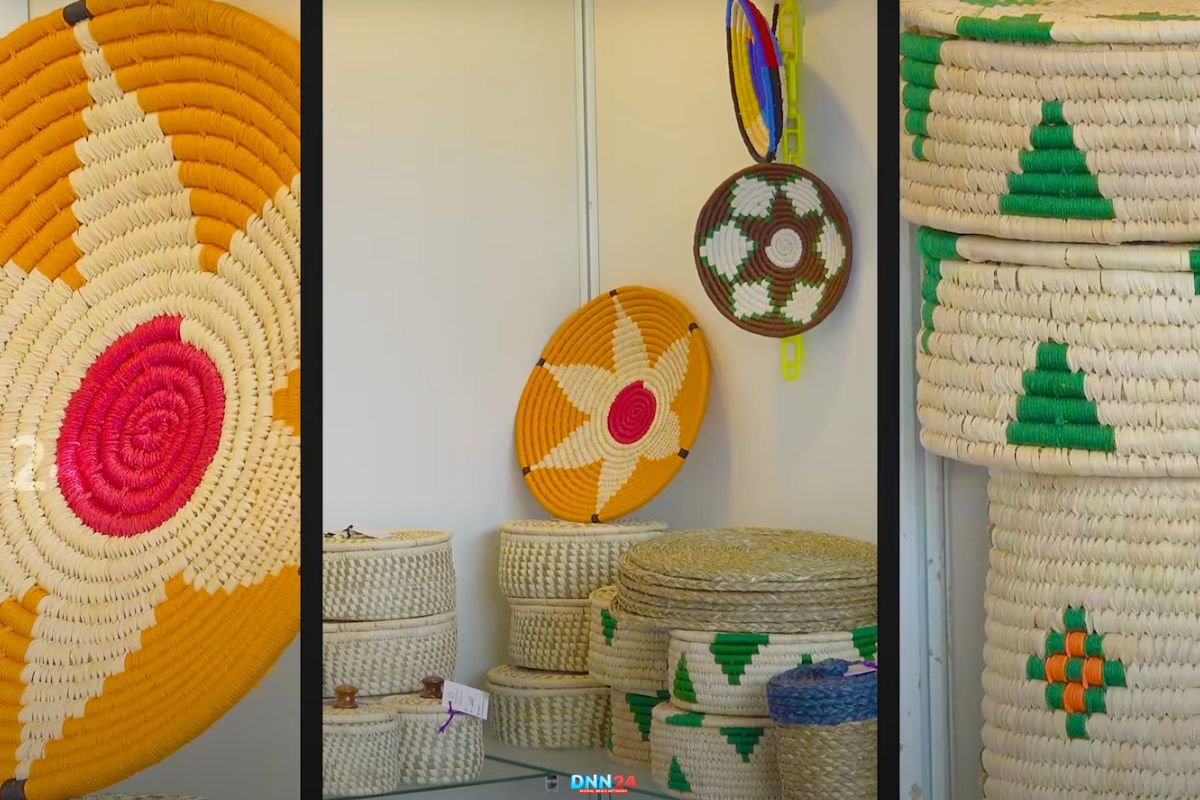
Consumer Trends Driving Demand
The inhabitants of large cities are already more inclined to choose products with an eco-decorative potential. According to a 2024 YouGov survey:
The research also showed that the most important purchase motivation that the metro buyer had, was sustainability, and this accounted for 68% of buyer’s preference.
Sabai lampshades are used in interior designing, especially in boutique hotels, and it is also embellished in bohemian apparels at Anita Dongre.
Challenges and the Road Ahead
Persisting Hurdles
However, the selected industry remains problematic in the following aspects:
Low Profits: Middlemen compromise the 50% of the profit margins.
Another reason is the skill migration: young people do not get employed in labor-intensive weaving and prefer cities’ occupations.
PROBLEM STATEMENT: Fluctuating weather patterns in particular with reference to rainfall have an impact on the quality of the produced grass.

Solutions in Motion
Hopes have been boosted to deal with these factors:
Non-Governmental Organizations: Some of them include Sabai Kala Shakti Sangathan which bargain for better wages.
Learning Technology Memorization: Internet of Things sensors provide information about the growth status of grass; Artificial Intelligence tools forecast tendencies in design.
Policy Support: Odisha’s 2025 budget allocates ₹200 crore for craft infrastructure development.
Conclusion: Crafting a Sustainable Future
Odisha’s Sabai grass artisans are not just preserving a craft—they’re pioneering a model for sustainable living. Thus when they embark on committing themselves to the practice of environmentally friendly practices they show how one can hold on to the traditional business practices and still embrace economical practices. Unfortunately the Sabai crafts are still at the stage where it can become a global heirloom if consumers are beginning to use green products.

In the words of a master weaver from Mayurbhanj:
“Every strand of Sabai grass carries our history. So, when you hold our craft you hold the spirit of Odisha and every speck of land of this earth introducing, helping go green.
Also Read: Timeless Treasures: The Art and Cultural Heritage of Telangana
You can connect with DNN24 on Facebook, Twitter, and Instagram and subscribe to our YouTube channel.

